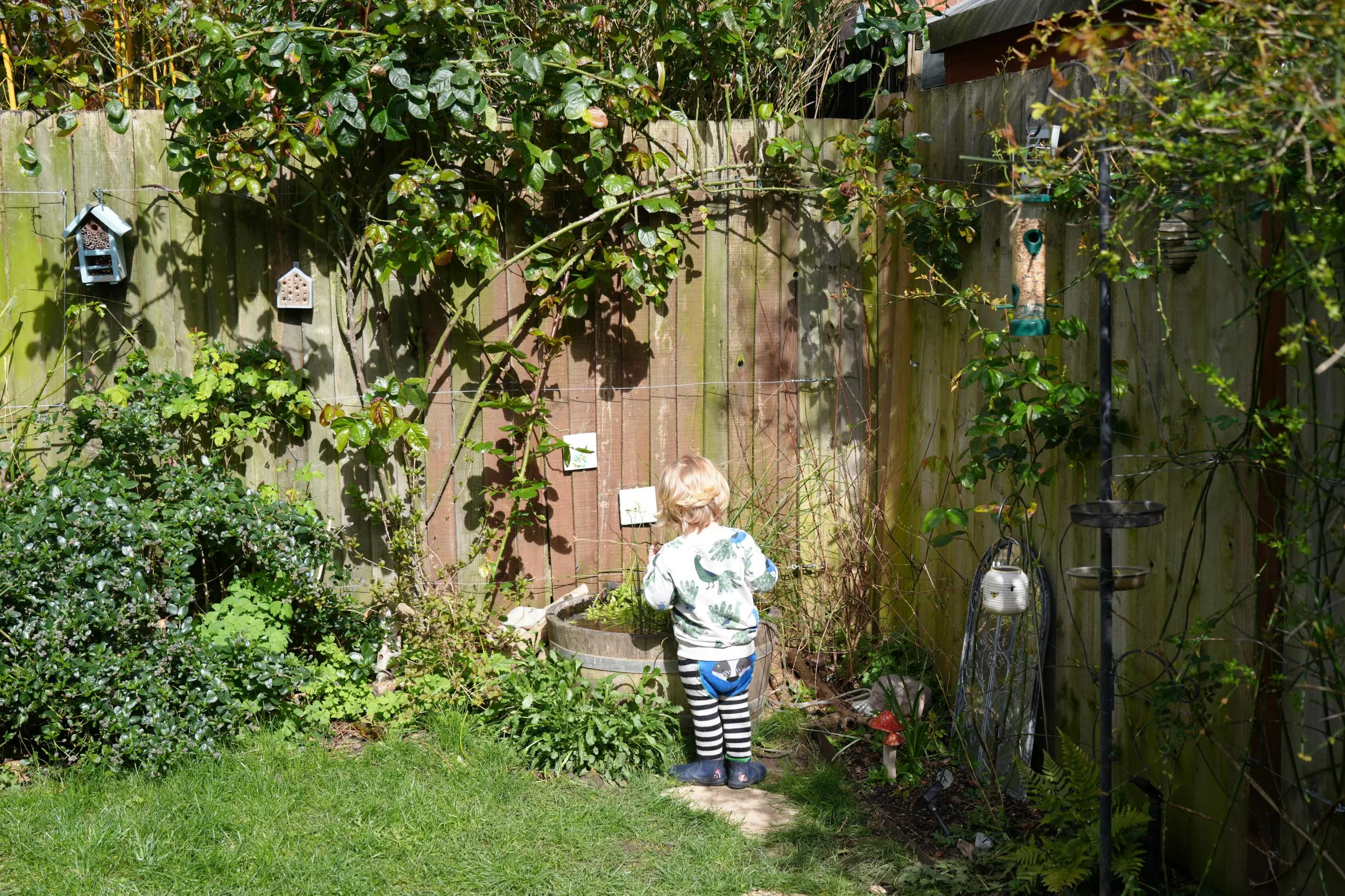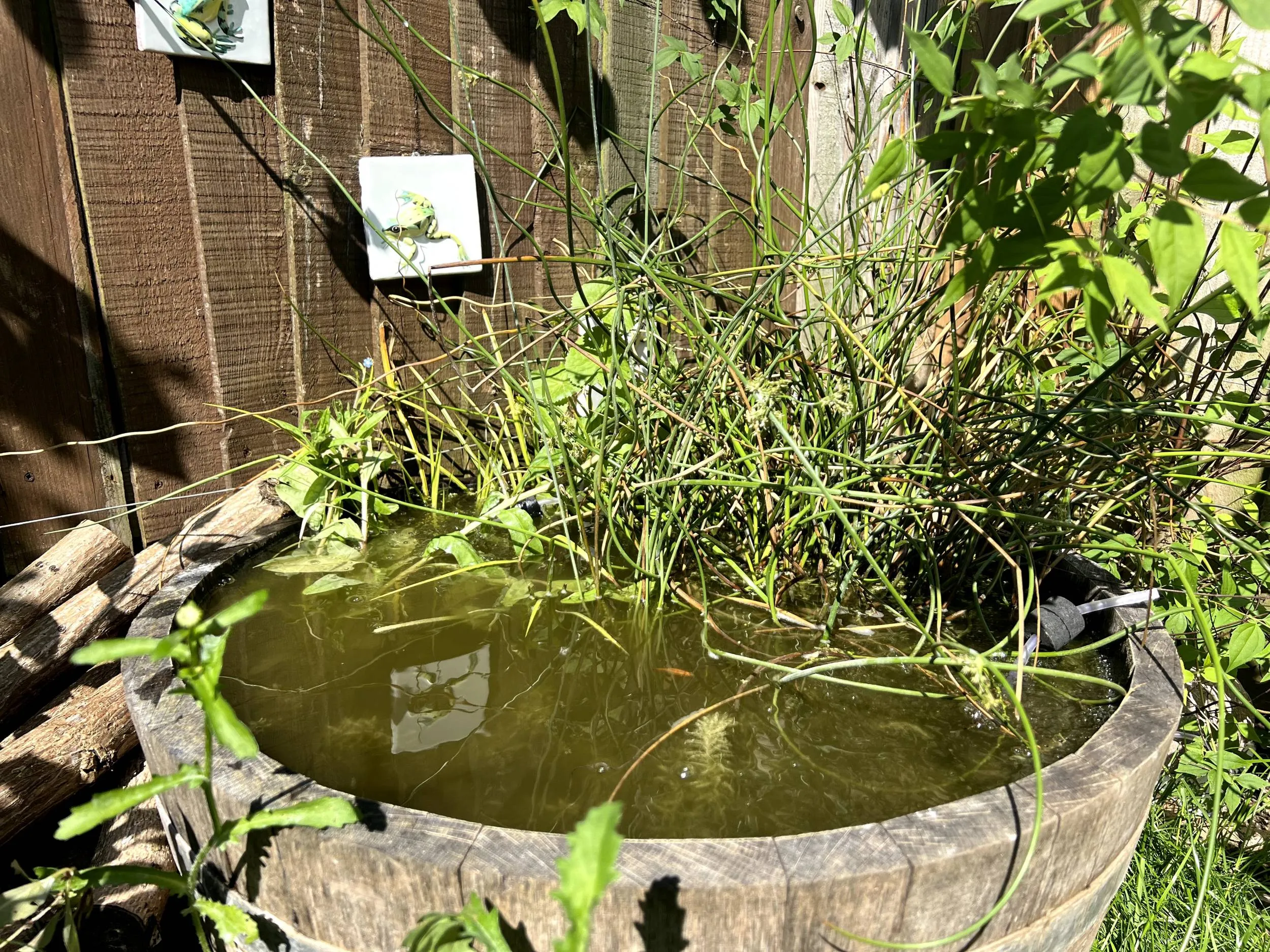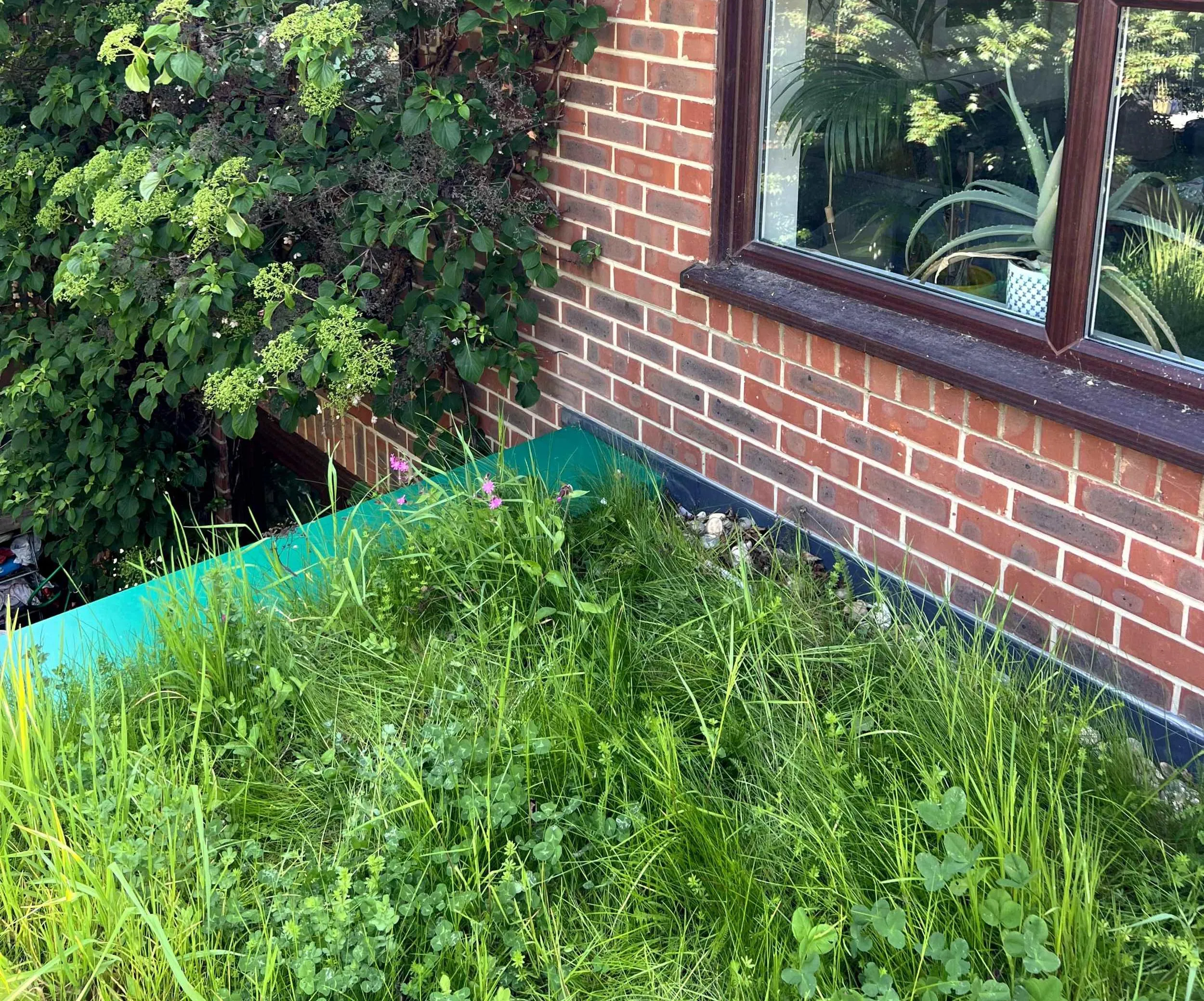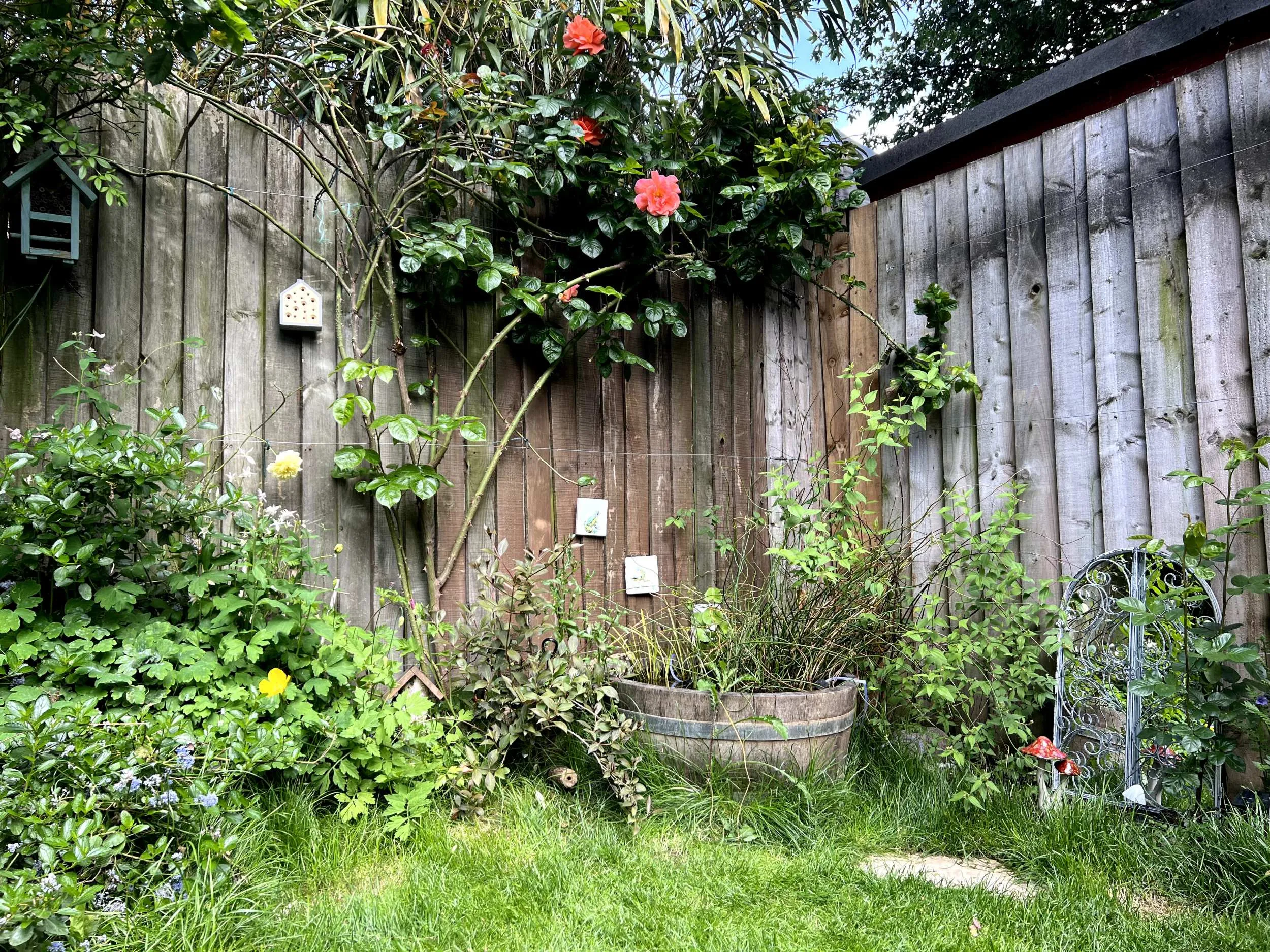Another recent addition to this lineup is a little Wren, recognisable by its perky tail, which creeps along the fence in the corner of the garden by our tub pond. Since we introduced the pond, fashioned out of a recycled half wine barrel, there’s been a notable increase in the number of species frequenting our garden. Dragonflies zip across its surface, solitary bees cling to the sides, while dipping their straw-like proboscises into the water, and birds – like the Wren – perch on the edge, taking delicate sips.
While autumn or winter is often seen as the best time of year to build a pond, spring is fine too, and building one now means that you’ll have a water source ready for the hotter, dryer months, when it’s so badly needed. If you have a decent amount of space, a sunken pond is best, especially for amphibians. But anything from a washing up bowl to an old sink can make a huge difference to urban wildlife. We’ve used plastic baskets filled with aquatic compost and weighted with pebbles to add plants, including my favourite – Water Forget-me-nots – delicate clusters of sky-blue flowers with lemon-yellow centres. Plants like these help to keep the water clear, as well as ensuring that any creatures that fall in can climb back out again.

.jpg)






